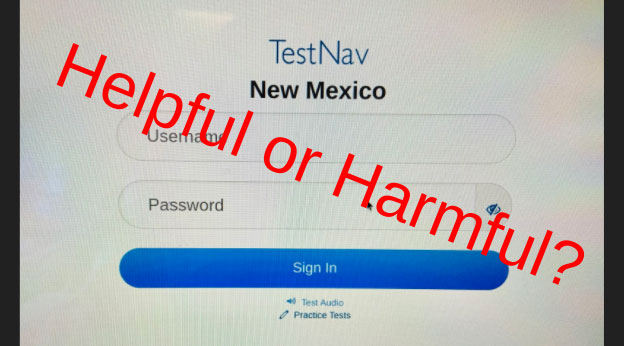Standardized Testing: An Improvement or a Drawback?
November 5, 2019
Standardized testing has been a part of the education system in the United States for over a hundred years, but are these tests helping or hindering student achievement? This has been one of the many questions that pervade the education system.
According to The Perspective, a website that displays two sides of many controversial issues, standardized testing has been a part of education in the United States since the mid-1800s. When the No Child Left Behind Act was passed in 2002, standardized testing was made mandatory in all 50 states. Since then, there have been many debates on the topic.
Advantages
Some say that standardized testing is a fair and reliable way to measure student achievement. A fair test for all students was made a requirement for all states when the U.S.’s Every Student Succeeds Act was passed in 2016. This act was meant to “close the gap” between minority and majority groups regarding race and socioeconomic level to ensure that all students have a fair education. Similar testing in all states was meant to help “close the gap.”
Another advantage is that standardized tests are all assessed the same because these tests are graded by computers or by people who do not know the students involved and who are trained to grade all responses the same. This prevents any biased grading or human mistakes, which creates a fair way to measure student achievement and areas for improvement.
Some evidence has also shown that standardized testing has improved student success ratings, according to The Perspective. Over the past 100 years in the United States, standardized testing has had a positive influence on student achievement in 93 percent of students, according to a study done by Dr. Richard Phelps, a testing scholar and economist who wrote the book Defending Standardized Testing.
At Santa Fe High School, test scores and student success ratings have gone up since last year. According to the Santa Fe Public Schools’ website, both English Language Arts and Math scores have gone up since 2015 when PARCC was implemented. In particular, the PARCC math proficiency scores increased from 6.8 percent to 9.3 percent from 2015 to 2019.
Ms. Romp, who teaches Algebra 2 at Santa Fe High, has seen this increase: “I have (seen an increase in math scores)… It depends on the students we get, but this past school year, for example, we had a 2 percent increase in our math scores.”
One other purported advantage of standardized testing is that “teaching to the test” can actually be a good thing because teachers tend to teach the curriculum, which prevents time from being wasted on material outside the curriculum. This allows class time to be used efficiently to ensure student success.
Along with the benefits of standardized testing, there are several cons as well.
Disadvantages
Though some studies show success ratings have risen since the No Child Left Behind Act, others show that student achievement has actually decreased. In 2011, a National Research Council report stated that there was no evidence to suggest an improvement in student success ratings, and even stated that the ratings had gone down. Before standardized testing was made mandatory, the United States was ranked 18th worldwide in math, but by 2009, the United States dropped to 31st. Similar effects were seen in science while reading stayed stable, according to PISA, the Program for International Student Assessment.
Another downside is that the testing is expensive. When New Mexico Governor Michelle Lujan Grisham signed an executive order to end PARCC testing, she proposed a budget of $7.8 million to find an alternate test, according to the Las Cruces Sun News. Instead of testing, this money could have gone to other school resources and activities.
Some claim that there has been a decrease in student creativity since standardized testing was implemented. Because teachers tend to “teach to the test,” creative subjects such as art, languages, and social studies have been ignored or not focused on because the standardized tests do not test those subjects. This then leads to a “creativity crash,” according to an article on The Perspective.
Do teachers at Santa Fe High teach to the test?
“I teach to the Common Core, and the Common Core is aligned to the test… I do align my lessons every day to Common Core standards,” said Ms. Hogan, a tenth-grade English teacher. “It’s not so much that I believe that we should teach to the test, but I think the test is a reality and our kids have to go in and take it. So I think it is partly my job to just make them as best prepared as I possibly can.”
Even though there is plenty of controversy over the issue, standardized testing is still being used. In early October, the New Mexico Public Education Department announced its decision to use the SAT as the state-mandated standardized test for juniors. Freshmen, sophomores, and seniors will no longer have s state-mandated annual test.
“I know I have some really smart students who might not do well on tests,” Ms. Hogan said, adding, “[Standardized tests] are problematic. They’re not perfect by any stretch.”


